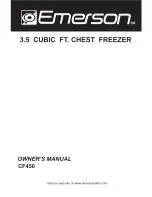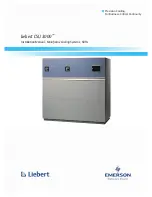
8
4 = lowest temperature (maximum refrigeration)
The numbers do not mean a specific temperatures.
The temperature in the freezer compartment can vary due to the ambient
temperature, the amount of food, and the frequent opening of the freezer door.
IF THE ROOM IS COOL, THE APPLIANCE COOLS LESS. THE TEMPERATURE IN THE
APPLIANCE MAY THEREFORE RISE. Use the thermostat wheel to set a lower
temperature.
FREEZING AND STORAGE OF FOODSTUFFS
To avoid food contamination, follow the instructions below:
•
Prolonged opening of the door can significantly increase the temperature in the
compartments of the appliance.
•
Regularly clean surfaces that may come into contact with food and accessible drainage
systems.
•
Store fresh meat and fish in suitable containers in the refrigerator so that they do not
come into contact with or drip on other food.
•
If the refrigerator is left empty for a long time, switch it off, defrost, clean, dry and leave
the door open to prevent mold inside the appliance.
When you intend to freeze fresh food, place it in the fast freeze section 4 (see fig. 1).
Transfer frozen food from the quick-freeze compartment to the drawer (s) in the storage
compartment.
DO NOT EXCEED THE MAXIMUM AMOUNT OF FROZEN FOOD INDICATED IN THE
PRODUCTS DATA SHEET.
•
Leave not less than 2.5 cm gap between a top of frozen
products and a bottom of drawer, which is over them.
•
Do not place unwrapped foodstuffs in the freezer sections.
•
Do not refreeze partly thawed products. Fresh food
for freezing should not touch already frozen foodstuffs.
•
Do not freeze foodstuffs that are warmer than the room
temperature.
•
WARNING! Do not freeze liquid foodstuffs in glass vessels or bottles.
•
Strictly observe the frozen foodstuffs validity dates indicated by the manufacturer on the
product packaging.
•
WE RECOMMEND THAT FROZEN FISH AND SAUSAGE SHOULD BE STORED IN THE
FREEZER COMPARTMENT NOT LONGER THAN 6 MONTHS; CHEESE, POULTRY, PORK,
LAMB – NOT MORE THAN 8 MONTHS; BEEF, FRUIT AND VEGETABLES – NOT LONGER
THAN 12 MONTHS.
CAUTION! In the event of accidental defrosting, for example due to a power failure, if the
power has been off for longer than the value shown in the technical characteristics chart
under "rising time", the defrosted food must be consumed quickly or cooked immediately
and then refrozen (after cooling).
































